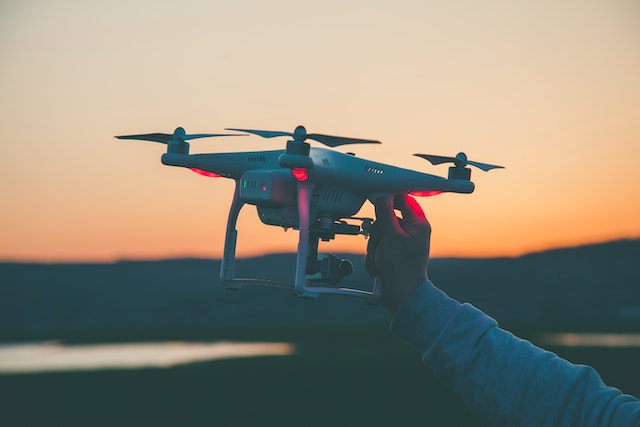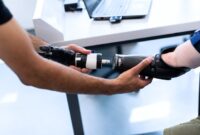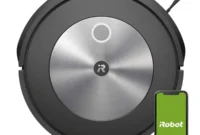Drones have revolutionized the world of cinematography, enabling filmmakers to capture breathtaking aerial shots and create cinematic masterpieces. If you’re an aspiring filmmaker or a videography enthusiast looking to dive into the world of cinematic drone filming, this article is here to guide you through the process. From choosing the right drone to mastering flight control and enhancing your shots with accessories, we’ll cover everything you need to know to create stunning aerial footage. So, fasten your seatbelt and let’s embark on this thrilling journey!

1. Introduction
In this digital age, cinematic drone filming has become increasingly popular. Drones equipped with high-quality cameras can capture unique perspectives and stunning aerial shots that were once only possible with expensive helicopter rentals. However, capturing cinematic footage with a drone requires more than just pressing the record button. It requires skill, creativity, and an understanding of the techniques involved in cinematography. In this article, we will explore the essential tips and tricks to elevate your drone filming to a cinematic level.
2. Choosing the Right Drone for Cinematic Filming
To capture cinematic footage, it’s crucial to select the right drone that meets your filming needs. Several factors come into play when choosing a drone for cinematic purposes:
2.1. Camera Quality and Capabilities
The quality and capabilities of the drone’s camera are paramount when it comes to cinematic filming. Look for a drone that offers at least 4K resolution, as it provides sharper and more detailed footage. Additionally, consider features like adjustable aperture, log profiles, and a wide dynamic range to have greater control over the image during post-production.
2.2. Flight Time and Range
Cinematic shots often require longer flight times and extended range capabilities. Ensure that the drone you choose offers sufficient flight time per battery charge, allowing you to capture the desired shots without interruptions. A longer range will provide flexibility in exploring larger shooting locations.
2.3. Stability and Maneuverability
Stability and maneuverability are crucial for smooth and professional-looking footage. Look for a drone with a 3-axis gimbal that stabilizes the camera and reduces vibrations. Additionally, advanced flight modes like tripod mode or follow-me mode can help you achieve precise and controlled movements during filming.
3. Understanding Cinematic Techniques
Cinematic drone filming involves more than just capturing aerial shots; it’s about employing various techniques to create visually captivating footage. Let’s explore some essential cinematic techniques:
3.1. Composition and Framing
Composition and framing play a significant role in visual storytelling. Consider the rule of thirds, leading lines, and symmetrical or asymmetrical compositions to add depth and visual interest to your shots. Experiment with different angles and perspectives to find the most captivating compositions.
3.2. Camera Movements
Adding camera movements can bring life and dynamism to your shots. Practice smooth pans, tilts, and tracking shots to follow the action or reveal the surroundings gradually. Combine different camera movements to create more complex and engaging shots.
3.3. Slow-motion and Time-lapse
Slow-motion and time-lapse techniques can add a dramatic effect to your footage. Slow-motion shots capture details and create a sense of suspense, while time-lapse sequences condense time and showcase the passing of hours or seasons. Master these techniques to add a cinematic touch to your aerial footage.
4. Planning and Preparing for the Shoot
Before taking off, proper planning and preparation are essential for a successful drone filming session. Consider the following steps to ensure a smooth shoot:
4.1. Location Scouting
Research and explore potential shooting locations beforehand. Look for visually appealing landscapes, unique landmarks, or architectural wonders that will enhance the cinematic quality of your footage. Visit the location beforehand if possible to identify potential obstacles or specific points of interest.
4.2. Weather Considerations
Weather conditions can greatly impact your drone filming experience. Check the weather forecast to avoid strong winds, rain, or extreme temperatures that might affect the stability and flight performance of your drone. Ideal weather conditions include calm winds, clear skies, and good lighting.
4.3. Shot List and Storyboard
Create a shot list and storyboard to have a clear vision of the shots you want to capture. Plan your sequences, transitions, and camera movements in advance to optimize your shooting time and ensure you don’t miss any important shots. This will also help you stay focused and organized during the shoot.
5. Mastering Drone Flight Control
Flying a drone smoothly and precisely is crucial for cinematic filming. Follow these steps to master your drone’s flight control:
5.1. Basic Flight Controls
Familiarize yourself with the basic flight controls, including throttle, pitch, roll, and yaw. Practice flying in open areas to gain confidence and improve your maneuvering skills. Start with slow and deliberate movements, gradually progressing to more complex flight patterns.
5.2. Manual and Automated Flight Modes
Most drones offer different flight modes, including GPS-assisted and manual modes. GPS-assisted modes provide stability and smooth hovering, while manual modes offer more control for creative maneuvers. Understand and experiment with different flight modes to utilize their benefits for cinematic shots.
5.3. Practicing Precision Flying
Precision flying is essential for capturing precise shots and executing complex movements. Practice flying in confined spaces or through obstacles to enhance your piloting skills. This will enable you to execute intricate maneuvers with confidence and precision.
6. Enhancing Cinematic Shots with Accessories
Beyond the drone itself, various accessories can further enhance the cinematic quality of your footage. Consider the following accessories:
6.1. Filters and Lenses
Filters and lenses can help you achieve specific visual effects and control the light entering the camera. Neutral density (ND) filters reduce the amount of light, allowing for longer exposure times and smoother motion blur. Wide-angle or telephoto lenses can provide different perspectives and focal lengths for diverse shots.
6.2. Gimbal Stabilizers
Gimbal stabilizers provide additional stability and vibration reduction, resulting in smoother footage. Invest in a high-quality gimbal stabilizer compatible with your drone to eliminate unwanted vibrations and jitters.
6.3. ND Filters and Polarizers
ND filters and polarizers are essential for controlling light and managing glare. ND filters allow for proper exposure in bright conditions, while polarizers minimize reflections and enhance color saturation. Experiment with different filter strengths to achieve the desired visual aesthetics.
7. Post-production and Editing Tips
Post-production is where the magic happens, transforming raw footage into a polished cinematic masterpiece. Consider the following tips during the editing process:
7.1. Video Editing Software
Choose a professional video editing software that suits your needs and skills. Popular options include Adobe Premiere Pro, Final Cut Pro, and DaVinci Resolve. Familiarize yourself with the software’s features and tools to optimize your editing workflow.
7.2. Color Grading and Correction
Color grading and correction allow you to establish the desired mood and aesthetic of your footage. Adjust the color temperature, contrast, saturation, and exposure to achieve the desired cinematic look. Pay attention to color consistency across shots to maintain visual coherence.
7.3. Adding Music and Sound Effects
Music and sound effects play a crucial role in evoking emotions and enhancing the cinematic experience. Choose appropriate music tracks or sound effects that complement the mood and pace of your footage. Ensure that the audio levels are well balanced and synchronized with the visuals.
8. Safety Guidelines and Legal Considerations
When flying drones for cinematic purposes, it’s important to adhere to safety guidelines and legal regulations. Consider the following aspects:
8.1. Drone Regulations and Permissions
Familiarize yourself with the drone regulations in your country or region. Understand where you can legally fly, any altitude restrictions, and whether you need specific permits or licenses for commercial filming. Abiding by the regulations ensures safety and prevents legal issues.
8.2. Safety Precautions
Prioritize safety during your drone filming sessions. Ensure that you fly in open areas away from people, buildings, and airports. Maintain a safe distance from obstacles and follow basic safety protocols, such as not flying over crowds or near power lines.
8.3. Insurance and Liability
Consider obtaining insurance coverage for your drone and equipment. Accidents can happen even to the most experienced pilots, and insurance protects you financially in case of damage or liability. Consult with insurance providers to find the best coverage options for your needs.
9. Conclusion
Cinematic drone filming opens up a world of creative possibilities, allowing filmmakers and videography enthusiasts to capture stunning aerial footage. By choosing the right drone, mastering flight control, understanding cinematic techniques, and paying attention to planning, accessories, and post-production, you can elevate your drone filming to a cinematic level. However, always prioritize safety, adhere to regulations, and consider legal and insurance aspects to ensure a smooth and responsible filming experience.
FAQs
1. Can I fly a drone in any location for cinematic filming purposes? Drone regulations vary from country to country. Always research and abide by the regulations in your area to ensure safe and legal drone operations.
2. What are some recommended video editing software for cinematic drone footage? Popular video editing software for cinematic editing include Adobe Premiere Pro, Final Cut Pro, and DaVinci Resolve.
3. Do I need a specific drone for cinematic filming? While any drone with a camera can capture aerial footage, drones with higher camera quality, stability, and maneuverability are recommended for achieving cinematic results.
4. How can I achieve smooth footage while flying a drone? Using a drone with a 3-axis gimbal stabilizer and practicing precision flying techniques can help achieve smooth footage.
5. What should I consider when planning a cinematic drone shoot? Consider location scouting, weather conditions, and creating a shot list and storyboard before your shoot to ensure a successful filming session.


